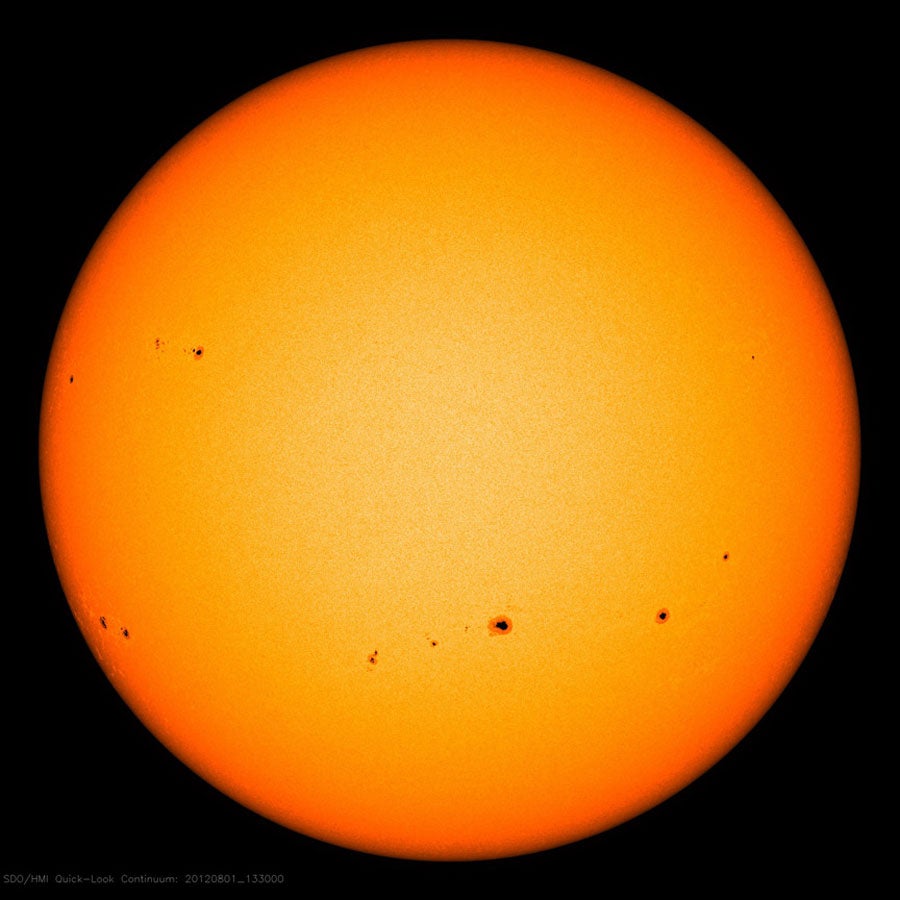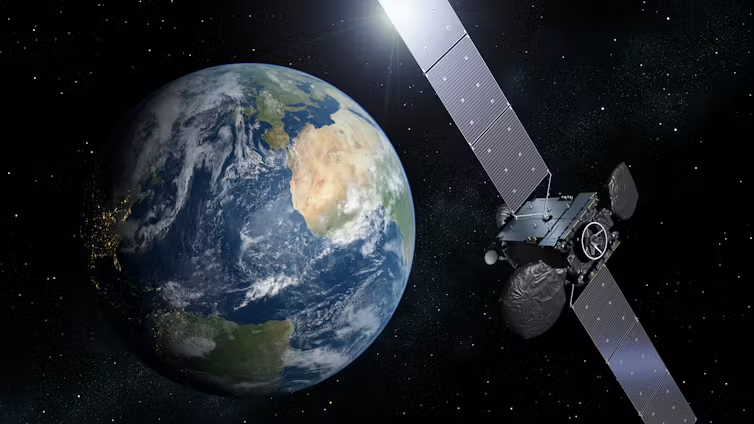The Sun rotates every 28 days, and because it doesn’t have a solid surface, it should be slightly flattened. This tiny flattening has been studied with many instruments for almost 50 years to learn about the Sun’s rotation, especially the rotation below its surface, which we can’t see directly.
Now Jeff Kuhn and Isabelle Scholl from the University of Hawaii at Manoa, Rock Bush from Stanford University in California, and Marcelo Emilio from the State University of Ponta Grossa in Brazil have used the Helioseismic and Magnetic Imager (HMI) aboard the Solar Dynamics Observatory satellite to obtain what they believe is the definitive — and baffling — answer.
Because there is no atmosphere in space to distort the solar image, they were able to use HMI’s exquisite image sensitivity to measure the solar shape with unprecedented accuracy. The results indicate that if the Sun were shrunk to a ball one meter in diameter, its equatorial diameter would be only 17 millionths of a meter larger than the diameter through its north-south pole, which is its rotation axis.
They also found that the solar flattening is remarkably constant over time and too small to agree with that predicted from its surface rotation. This suggests that other subsurface forces, like solar magnetism or turbulence, may be a more powerful influence than expected.
Kuhn, the team leader, said, “For years we’ve believed our fluctuating measurements were telling us that the Sun varies, but these new results say something different. While just about everything else in the Sun changes along with its 11-year sunspot cycle, the shape doesn’t.”










